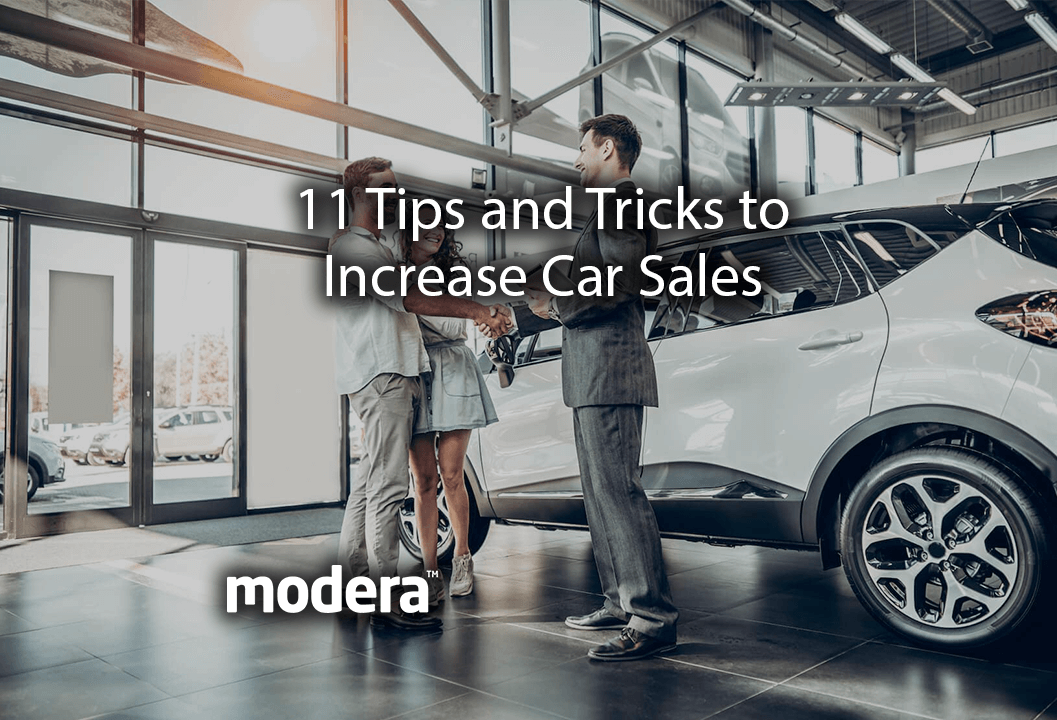
Selling vehicles has now become tougher than ever! Not only has the competition intensified, but the Covid-19 pandemic has totally changed buying behavior of customers. It is imperative to understand and brush up on car sales psychology to stay a step ahead. In this article, we will talk about how to boost vehicle sales in your dealership.
The car selling process has swiftly evolved!
The future of auto sales is rapidly shifting gears. Why? Vehicle buyers want to spend less time at dealerships. Instead they wish to start the car buying process online itself. But how can dealerships adapt in this digital age?
The process of selling cars used to be a well-oiled machine; complete with print ads and billboards, but that is simply not enough anymore. If you think about offering lucrative discounts, even that won’t be sufficient! It is because the price point (and every other detail) of every comparable car within 1,500 miles is at the customer’s fingertips, so even a low price can’t guarantee a sale.
Charisma and a friendly demeanor do help to sell vehicles, but what do you do if customers don’t come to your dealership in the first place? You can’t just wait for customers to stroll in. You need to actively achieve face-to-face time with them before they even step foot in your lot. It is imperative to step up your marketing efforts and advertising – potential customers have to know about the dealership and what it offers.
Here are the 11 tips to improve car sales:
1. It is important to learn your customers’ names and remember them
You are in the business of selling cars, so a name carries a lot of meaning. If you want to boost sales in your dealership, it is imperative that car salespeople are trained to learn and remember names. It includes those of current and potential customers.
In this day and age, communication with a personal touch has dwindled. Emails, text messages and other types of marketing have lost their authenticity. According to a survey by Segment, 60% of customers are likely to bring in repeat business, when their shopping experience is personalized. When you use a customer’s name in communications and tailor content that pertains to their interests, it helps to create a great first impression. Not only that, but you can build rapport and establish trust by making customers feel like they are not just another email address or phone number.
A good car salesperson will learn a customer’s name as soon as they get an online lead, send them an introductory video email and use the customer’s name in the message. It should be exactly like they are talking casually to a friend. The mission here is to make the customer feel like they matter, establish trust, get them to come into the showroom and, ultimately, buy a car.
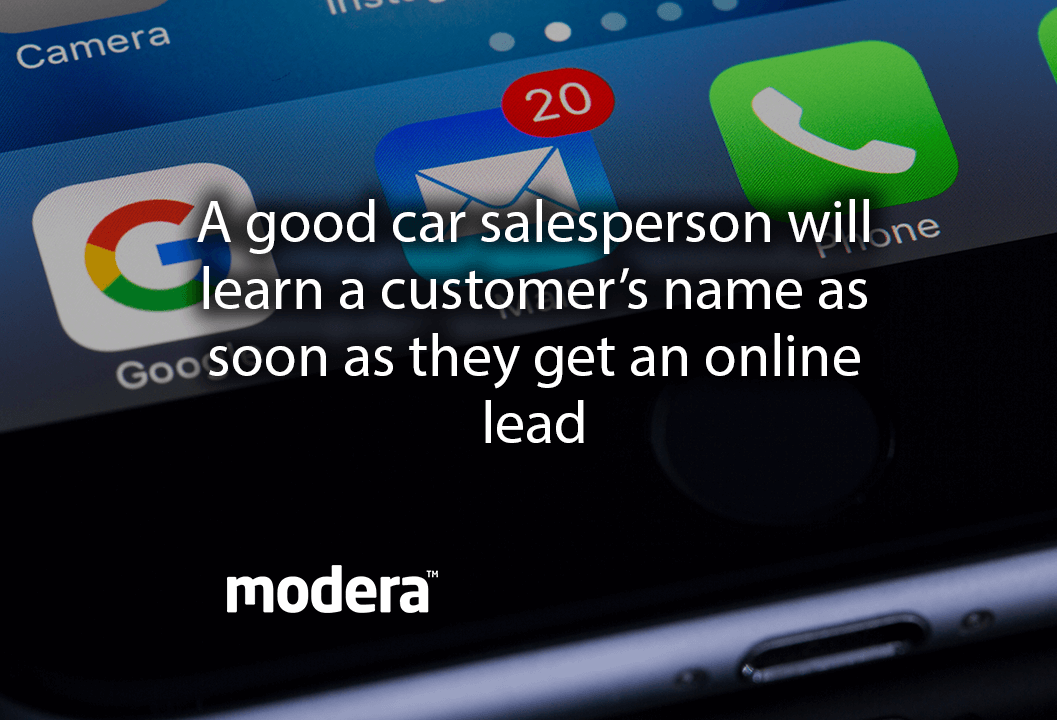
2. Tap into your customer’s needs
One of the best ways to sell cars successfully is to figure out what customers want and deliver on expectations. It means you have to ask the right questions and listen twice as much as you talk. Identify pain points such as:
- Specific features needed.
- Financing and credit limitations.
- Main uses for the vehicle (labor intensive, weekly mileage, etc.).
- A previous issue with a vehicle that caused stress and grief.
Thanks to the pandemic, customers have moved a major part of their car buying process online. They spend an average of 13-15 hours conducting research. It is safe to assume that most of them have a specific make and model in mind by the time they step into the dealership. Ask them questions like:
- What brings you in today?
- What sort of features are you looking for?
- Will you be the primary driver of this car?
Thus, you can pitch them similar options and open up a wider selection of cars to choose from that they probably haven’t even considered. These questions provide context about what your buyer is looking for, their budget, and who you are selling to. Their answers also allow you to cross-sell or upsell. If the customer lists safety as a must-have, consider upselling them on a four-wheel drive package or pedestrian alert add-on.
Remember, you have to show the customer their dream car, and other similar options, before they even come into the dealership. How? Simple – send them walk-around videos. The idea of this video is to get them into the dealership with an open mind and driving off the lot with a car. Combine this knowledge with their name, so even if they don’t buy from you the first time, you can start the conversation off where you left it when they drop in again.
3. Show that you have adequate knowledge about the buying process
Once you are introduced to potential customers, they are bound to ask questions. Now if they can look up everything from Google, they won’t bother getting in touch with you. Customers are more informed than ever before because:
- They get access to the vehicle inventories across the whole country.
- They have detailed reports regarding any makes and models.
- They probably have also already initiated at least one or a few conversations with other dealerships and sales professionals through email or some other digital communication medium before talking to you.
But only you can give them the full picture along the car buying process – not Google. To stand out in the new level playing field, give prospective clients direct answers to questions, on a more personal level via automotive video email. It allows you to give them a great car buying experience. Don’t contradict your customers as it could be misinterpreted as condescending.

4. Never mislead buyers
While you are advised to answer questions, please do so honestly. If you don’t know the answer, tell them you will get back, find the answer, and then provide it. For instance, say that a customer notices that a door on a car is a little off-center and has some chipped paint. They ask you about is it and you say it isn’t a big deal, and a fresh coat of paint would cover it up. In actuality, the car was in an accident but you didn’t look into it nor did you apologize for not mentioning it in the first place. This type of situation should always be avoided. Even if the customer never finds out about it, you shouldn’t give a misleading answer.
Another area you need to be upfront about is the costs associated with purchasing the vehicle. There is the processing fee, the tax and registration fee, the licensing fee, and so on. You have to step in and let the customer know about fees before they sit down and get ready to pay for the car. The fees aren’t the problem, as every service has a price. The problem is keeping it under wraps until the very end and blindsiding the customer.

5. Build rapport and make eye contact
If you notice the customer has become quiet, or is shifting uncomfortably, stop selling and focus on rapport. Continue to push an overwhelmed prospect or selling points, and you risk alienating them and losing the sale.
Instead, ask them what they like to do on the weekends, what they do for work, or where they are from. These questions are non-threatening and easy to answer. Once their body language relaxes, you can ease back into the sales process, by talking about their preferred makes and models. This steers the conversation back to the sale and averts a crisis of cold feet.
When the prospect speaks, make sure to hold their gaze. Look directly into their eyes and give a warm, comforting smile. It is important to make them feel at ease. If they are put off by your demeanor, they will think you are uninterested in selling the vehicle to them. It won’t take five seconds for them to walk out after that. Remember, it could be difficult for some people to make or hold eye contact. If someone is avoiding your gaze, be sensitive to their needs and hold a soft gaze that doesn’t put them on the edge.
6. Make sure to treat customers equally
When potential clients arrive at the dealership, never assume anything about them. For instance, don’t think one makes more money, so they will be investing more. When talking to them, it is important to make them feel included in the decision-making process. Show that they are a valued part of the purchasing process by asking questions, and paying attention to what they say. In addition, don’t judge customers by their appearance. Don’t assume that someone who comes into the dealership wearing a suit will invest more than someone who comes in wearing a pair of cut-off jeans. You may discover, the customer with the cut-offs is willing to invest more in their ride than their wardrobe. It is necessary not to make snap judgments.
You need to be patient with all your customers, especially those who don’t like making financial decisions. But you have to keep an eye out for those who potentially take you away from deals that are more likely to close. They are known as tire kickers. They don’t fit the ideal customer profile, don’t research the sales solutions they require, and most importantly, can’t afford what you sell. If someone is coming into the dealership every day for a week, and going for test drives on multiple cars without making a decision, it is a red flag to watch out for.
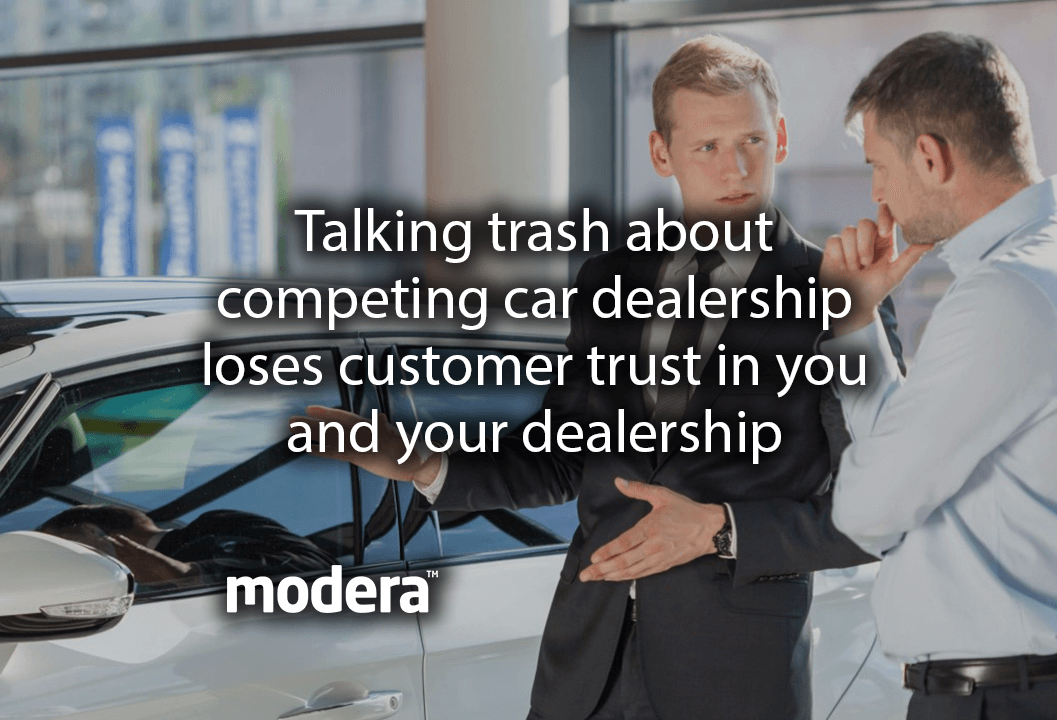
7. Don’t talk trash about competitors
When potential customers come into your dealership, and say they received a better deal at your competitor, resist the urge to trash-talk. Instead, focus on what makes your dealership different. So ifsomeone comes into the dealership and tells you how the competitor is offering more discounts on the selling price, take a moment. Then convince them how your dealership offers the best after-sales service, how you are available to address their concerns, etc. You can even throw in an extended warranty too!
8. Be firm with your price, but don’t push it
You should know when to make the sales pitch and start talking about price. When you know the buyer is in love with a car and ready to buy, that is a good time to ask, “Are you ready to buy this car today?” and if the reply is “Yes” then you can start discussing cash down, monthly payments, trade-in values, and more. Tell the car salesperson to involve the sales manager in the conversation to help negotiate price, maximize the dollars for the dealership, and offer a fair deal to the buyer.
It is imperative that you avoid the hard sell. If you are too insistent, the customer is likely to back off, and not come back. Remember, the customer is probably interested in buying, but they don’t want the salesperson to know it yet, for fear of dealing with the hard sell. One way to avoid this tension and eventual haggling is to be upfront with the price. This way, the potential buyer knows the price of the car right off the bat and they can simply choose to buy the car for that price or walk away. Be more honest about how low you are willing to go instead of posting a price that is the highest possible.
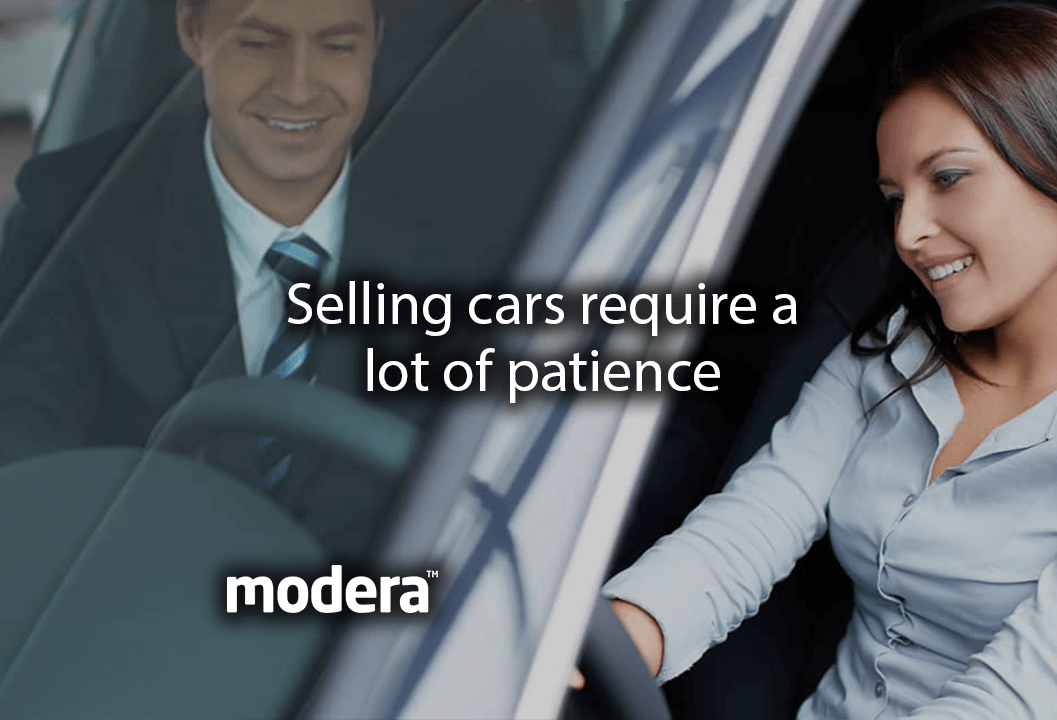
Selling cars require a lot of patience. It is not just about selling a toy, books, clothes or makeup. This is one investment that will last for years, so customers are wary before purchasing any vehicle – be it used or new. As ironic as that sounds, people want to buy, but they don’t want to be sold to, so it is important that you don’t come off as desperate or pushy. If they aren’t ready to make a decision immediately, it is fine. Tell them to take time, think it over, and then decide. Send a video thanking them for touring your dealership and how much you look forward to their next visit. Keep cultivating relationships, be patient, and your efforts will surely pay off.
9. Don’t discuss payment until the price is finalized
It is advisable to discuss the price in the last part of the journey. When you ask a customer if they are ready to buy, and they answer in the affirmative, only then should you discuss price. Payment, cash down, and trade-in value are all part of this process. Wait until the buyer is in love with the car and ready to buy. Then, leverage your sales manager to negotiate a price that will give your buyer a fair deal and maximize the dollars in your dealership’s pocket.
The biggest mistake you can make is to ask what kind of payment a customer is looking for before even discussing price. Car salespeople should be trained that they never begin talking about payment first. They should, however, be considerate in addressing the customer’s budget and financing concerns.

10. Don’t forget to follow-up after a sale
Once the customer drives off the lot with their car, it doesn’t mean your work is done. Remember, the idea is to build a long-term relationship with the customer. It not only results in repeat business, but they spread positive word-of-mouth regarding the dealership.
One of the strategies to being successful is keeping that customer for a lifetime either by getting them to come back or garnering referrals. After the sale, you should follow up and check how they like the car. Call them after a week and ask if they are facing problems with the vehicle. If they are, try to prescribe suitable solutions. Encourage them to leave a review or testimonial on your webpage or social media. Request them to send referrals if possible, and thank them for their business as well. This is best done through personalized communication, like a video, where you can show sincerity. Small gestures like these leave a lasting impression.
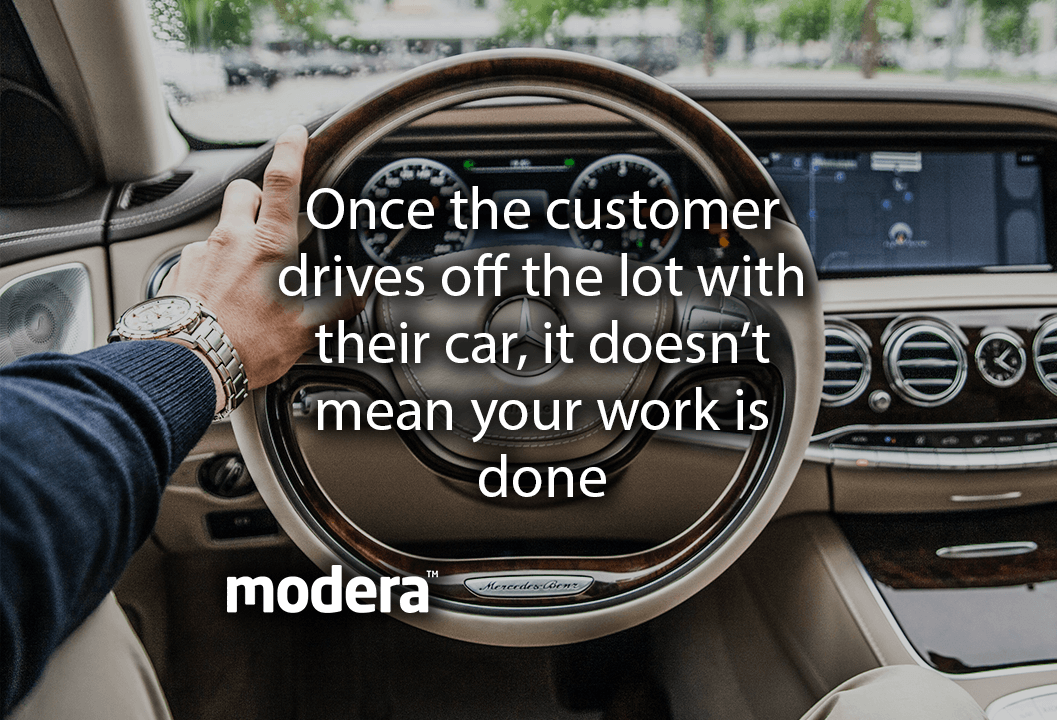
11. Stay on top of marketing online initiatives
Since buying behavior has changed drastically in the last two years (a major part is done online), it is time for all dealerships to adapt. Online marketing is essential nowadays, if you want your business to thrive. It requires clear and consistent messaging to get people through the door. You can do it with compelling video content on social media and other online marketing platforms. Make interesting videos about your team and culture, walkarounds, giveaways and service center specials, vehicle maintenance tips, etc. Be an automotive expert that existing and future customers can trust, so they will be convinced to purchase from your dealership.
The economy is slowly rebounding, so it is time to ramp up on strategies to drive more customers into the dealership, increase vehicle sales, and boost revenue. Follow these pointers, tweak them a bit if necessary, and you shall soon clock more sales!

